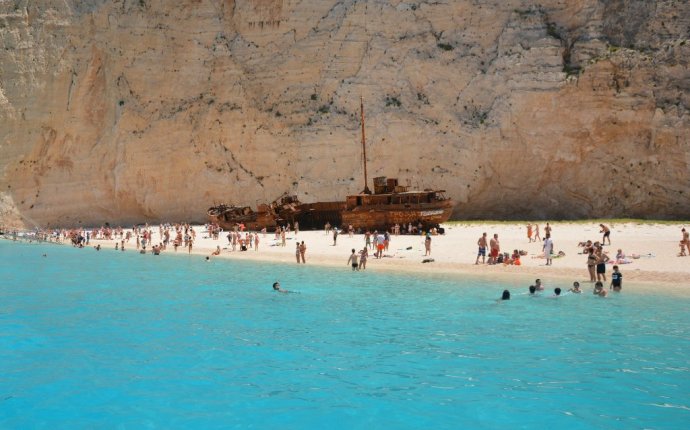
Shipwreck Island Greece
 Antikythera team members Nikolas Giannoulakis, Theotokis Theodoulou, and Brendan Foley inspect small finds from the shipwreck, while decompressing after a dive of 165 feet beneath the surface of the Mediterranean Sea in Greece. Brett Seymour/EUA/WHOI/ARGO hide caption
Antikythera team members Nikolas Giannoulakis, Theotokis Theodoulou, and Brendan Foley inspect small finds from the shipwreck, while decompressing after a dive of 165 feet beneath the surface of the Mediterranean Sea in Greece. Brett Seymour/EUA/WHOI/ARGO hide caption
Antikythera team members Nikolas Giannoulakis, Theotokis Theodoulou, and Brendan Foley inspect small finds from the shipwreck, while decompressing after a dive of 165 feet beneath the surface of the Mediterranean Sea in Greece.
Brett Seymour/EUA/WHOI/ARGOA team of archaeologists diving near the Greek island of Antikythera have reported a startling new discovery from a previously explored 2, 000-year-old shipwreck. The find — a very heavy, metal cylinder — offers new insights into the maritime warfare of ancient times, the scientists say.
"Of the 40 or 50 shipwrecks all around the Mediterranean, "there's nothing like the Antikythera, " says Brendan Foley, an archaeologist from the Woods Hole Oceanographic Institution. He's only recently returned from exploring the ruined ship, which now sits nearly 200 feet beneath the surface, encrusted with sediment and sea life.

Professional technical diver Gemma Smith studies artifacts on the Antikythera shipwreck. Brett Seymour/EUA/WHOI/ARGO hide caption
toggle caption Brett Seymour/EUA/WHOI/ARGOProfessional technical diver Gemma Smith studies artifacts on the Antikythera shipwreck.
Brett Seymour/EUA/WHOI/ARGOIn 1900, marble and bronze statues brought up by the sponge divers who discovered the ship stunned the world. Even more amazing was the Antikythera mechanism, a mysterious metal device the size of a wall clock. It turned out to be a sort of clockwork computer that predicted planetary movements and seasons with remarkable accuracy.
The wreckage drew no further exploration until 1976, when divers outfitted with scuba gear could search more carefully.
It was full of the best stuff available in the first century B.C., Foley says, including gold jewelry, glassware, perfume bottles and medicine bottles — a floating bazaar of wealth from the early Roman Empire.
In 2012, the Greek government asked Foley and his colleagues to help Greek scientists search for more artifacts. The Woods Hole team brought underwater robots and sophisticated diving gear so they could dive deeper and longer. They mapped the entire site. And they found more stuff.
"Beautiful stuff, " Foley says.
The ship was massive — about 180 feet long with hull timbers 5 inches thick. That's as thick as those of ships built centuries later, during the American Revolution. Analysis by Foley's team suggests the ship was likely built in Greece.